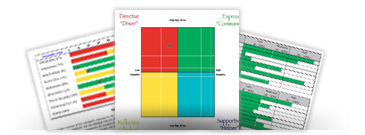Overcoming the Dreaded “Price” Objection in Sales
Of all the objections that salespeople are hit with, the one that seemingly causes the most trouble relates to the price of their offerings. To inexperienced sales staff, phrases such as, “it costs too much” or “we can get it cheaper elsewhere” seem to be solvable only through price reductions, which take a chunk out of both a salesperson’s commission as well as his company’s revenue. Salespeople that compete solely on price have to take shortcuts somewhere to remain profitable, which can lead to dissatisfied customers.
Fortunately, there are some effective sales optimization techniques to combat the price objection without resorting to large price reductions.
Use “Feel, Felt, Found.”
The first sales optimization tip is avoid arguing over the price issue or trying to persuade aggressively. Instead, the salesperson should show empathy for the buyer’s concern using phrases incorporating the words “feel,” “felt,” and “found. The pattern works like this:
• “I understand how you feel.” Pause to let the effect sink in.
• “Other customers felt this way when they first saw the investment required.” Pause again.
• “However, once they worked out a payment plan and implemented our service, they found that the increase in margins more than offset the price they paid.”
The exact wording should of course be adapted to the specific situation and product.
Stress superior benefits – and deliver them.
The next sales optimization recommendation is to stress value by focusing on the unique benefits the buyer will receive by purchasing from the salesperson’s firm as opposed to their competition. Despite any avowed price objections, buyers are generally looking for benefits such as high quality, good service, and a reasonable price, not necessarily the lowest.
Stressing benefits is especially applicable when the product being sold is a commodity. With little difference in the actual product between competitors, the only things that can justify a higher price for a commodity are benefits such as faster delivery, superior account servicing, better warranty, or whatever else that speaks to the buyer’s specific need. As a plus, if these benefits can be tied to a demonstrable betterment in ROI, the sale is much easier to close.
Restructure the deal to make the sale while retaining your value.
The last sales optimization tip that can help close the deal despite a price objection is to creatively restructure it, without lowering the price or commission, to get some buyer engagement instead of none at all. Some ways this can be done:
• Reduce the robustness of the offering itself. By selling a basic package or smaller quantity, the buyer can get a taste of the benefits while the salesperson continues to build the relationship. If satisfied, the customer will be more amenable to a premium offering later on.
• Extend the billing or financing terms for several more months.
• Break delivery into longer time frames.
• Phase-in implementation by attacking the high-priority needs first. Increase the scope to cover the remaining areas after initial results are obtained.
• Shift part of the solution to the following fiscal year so it is planned for in the budget ahead of time.
Price objections are usually a stall — the buyer is simply trying to slow down the purchasing decision due to the fear of making a mistake. They might also be a way to get rid of a salesperson they simply do not like, as the price objection is one of the easiest ways to get non-professional salespeople to give up, as mentioned before. Armed with the sales optimization techniques above, however, even green salespeople can overcome them and close more deals.



